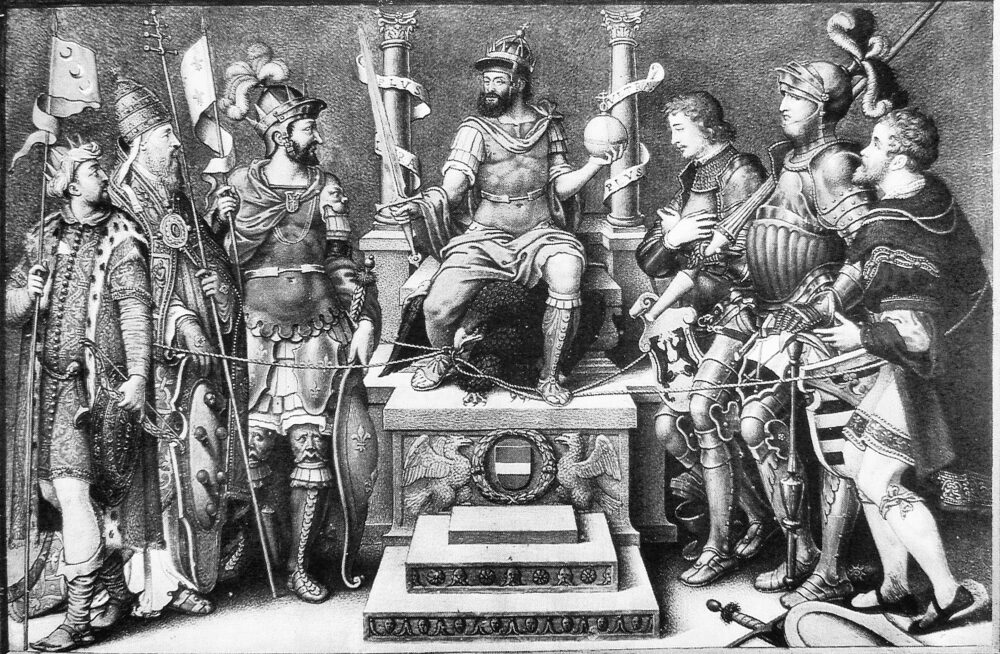A Comedy of Eras
Oh dear. So I’ve spent years pecking at records trying to explain my understanding of what a Stickelchen is- mostly trying to break my theory, and I haven’t been able to do so. I’ve also just spent the week sorting thousands of documents and fragments of documents only to find a single screen capture that explicitly states what it is. And I took it in 2018.
It’s both amusing and devastating!
It’s on par with me also carefully laying out evidence years ago as to why Henry really was desperate to not marry Anne only to find it was well understood by Netherlandish historians because Anne’s brother William laid claim to Gelderland and it lead to the Duchy being seized by the Emperor.
Charles got prints published of him specifically squashing Anne’s brother and Henry’s enemies. But also potential allies.

English: Charles V enthroned over his defeated enemies (from left to right): Sultan Suleiman, Pope Clement VII, Francis I, the Duke of Cleves, the Duke of Saxony and the Landgrave of Hesse.
You can’t fail to recognise what a liability it suddenly became. And pretty much during Anne’s long and dangerous journey. They had to ask Mary of Hungary (regent of the Netherlands and the Emperor’s sister) for help in ensuring her safety. And you only really learn how hard that was when you start reading from the point of view of historians who have written about Mary and how she ruled.
But the connection just gets even stronger when you realise both Henry and William were trying to marry Christina of Denmark. And who was protecting her? Mary of Hungary. And when did Henry learn about this? Actually that possibly made the alliance even more alluring. Anne would inherit from all her siblings after all.
I also spent some time pondering another reason and realised I had some nifty evidence for that as well.
Anyway. Having spent the week breaking my brain reading cross multiple languages (Czech, German, Dutch, Spanish, French) trying to make sure I had all my Anne research in appropriate folders including all copies of digitised books it was pretty funny to have had this little screenshot making my entire case that had been pieced across hundreds of documents and images and over 20 years.
But as I did pay for two images and a few articles/books (waiting for one to arrive) I can just print off what I’ve written so far to edit the way I work best which is at the table with a red pen and highlighters so I can get this finally sorted.
I would love to present my paper in a more formal setting but it takes a year from a call for papers to presenting and I’ve teased about this for far too long as it is. So I’ll format another paper to be a follow up and if accepted that can be focused on and tidied.
Rather than try to cite multiple documents this is a fairly good account of everything and in English: Modern Europe – Vol.2 -2nd ed., by Dyer, Thomas Henry, Publication date 1877
I’m also not trying to claim to have been the first to realise the enormity of the implications, nor that it was the sole reason to get out of the marriage fast, it just seems to not make it into works about the wives. Good works about Anne herself do cover this. I just have a vested interest in Gelderland as it’s where a full 1/4 of my ancestors came from. So I’ve read a secondary group of documents as I’ve also been trying to create a resource for women’s clothing also from Gelderland. And that research has really revealed the incredible pull of political and traditional connections to the North Rhine and other parts of the Netherlands.